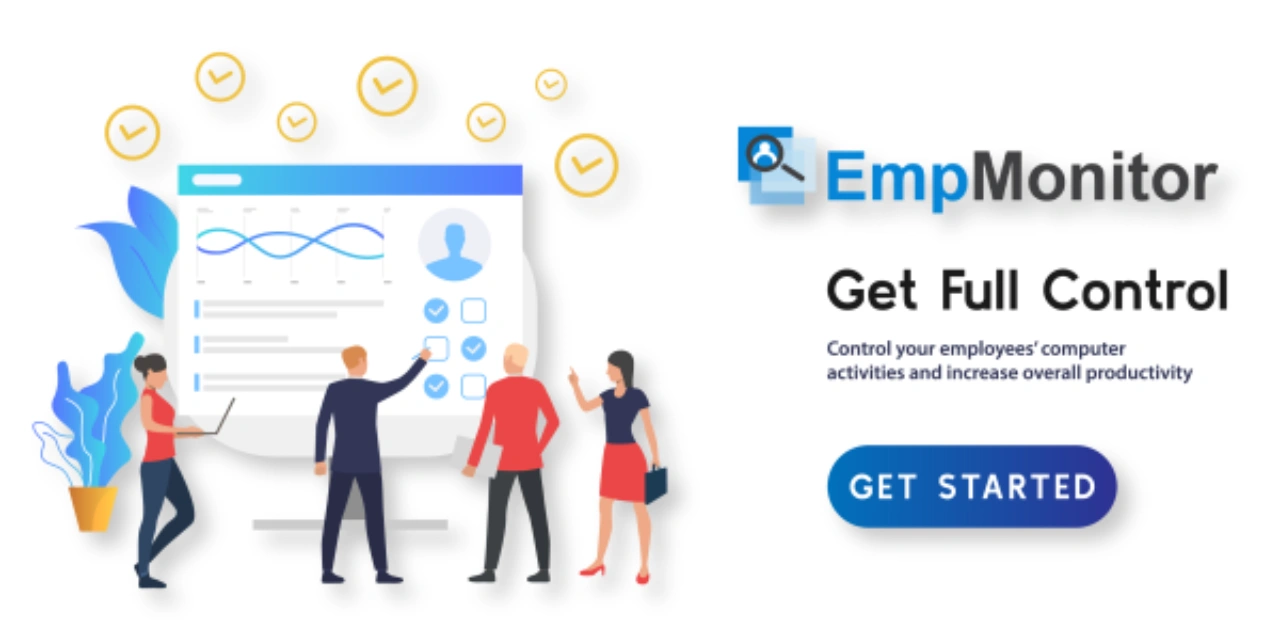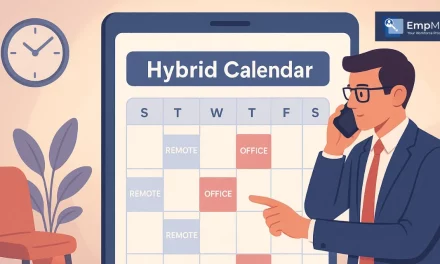Why does it feel like no matter how early you start, your most important work gets pushed to the next day?
It’s not a scheduling issue, it’s a prioritization gap.
When everything feels urgent, nothing truly gets the attention it deserves. That’s where the ABC method comes in, a practical, no-frills approach to managing your time by sorting tasks based on what matters.
Unlike complex productivity systems that take more time to set up than they save, this method is easy to adopt and surprisingly effective.
When paired with a time-tracking tool, it turns a simple framework into a strategic habit, giving you clarity on what to do and how your time is spent.
In this guide, we will explain everything you need to know about the ABC and its method and explore how to implement it in your workflow.
Prefer audio? Tune in to the blog version.
What Is the ABC Method In Time Management?
This method is a task prioritization technique that helps you organize your to-do list based on importance, not urgency.
Developed by time management expert Alan Lakein, this method asks a simple but powerful question: Is this task truly worth your time right now?
Here’s how it works:
- A- An ‘A’ Tasks are the most important, high-impact items that must be done today or have serious consequences if delayed. These should be your non-negotiables.
- B- A ‘B’ tasks are important, but not urgent. There’s no immediate fallout if you push them, but they still deserve attention once the A tasks are done.
- C- The ‘C’ tasks are nice-to-dos. These don’t add much value and often turn into distractions if not managed properly.
Instead of juggling priorities on the fly, the ABC method gives you a framework to decide what gets done first, what can wait, and what might not need doing at all. It’s structured but not inflexible, ideal for professionals who want more control without the overhead of complicated planning systems.
Why The ABC Method Is Still The Best Time Management Model Today?
Productivity advice tends to come in waves, new frameworks, trendy acronyms, and complicated systems flood your feed every few months. But despite all the noise, this method has quietly remained one of the most effective and widely used ABC method time management strategies. Why? Because it doesn’t overcomplicate things, it clarifies them.
Here is what makes the ABC time management model so resilient:
- It’s intuitive. You don’t need hours of training or fancy tools to get started.
- It fits any workflow. Whether you manage a team or work solo, it scales easily.
- It prioritizes impact. By separating what’s essential from what’s optional, it keeps you focused on value, not volume.
Many so-called productivity models either oversimplify task planning or burden you with micromanagement. The ABC method strikes a rare balance; it’s structured enough to bring order but flexible enough to evolve with your workload.
And when you combine it with an advanced time tracking tool like EmpMonitor, the value multiplies. You get visibility into how your time is spent, spot trends in what is taking up your A-level focus, and identify tasks that keep sliding into the C zone without payoff.
In short, tools like EmpMonitor help you plan better and act on your priorities with confidence.
ABC Method Vs Other Time Management Models
With so many productivity frameworks out there, it’s easy to wonder: Is the ABC method the most effective? To answer that, let’s put it side by side with a few other popular models and see where it stands out.
What sets the ABC method apart is its simplicity and speed. While models like GTD or the Eisenhower Matrix may require detailed systems or deep analysis, ABC works in real time with what’s on your plate currently. No overthinking, just clear action.
How To Implement The ABC Method In Your Daily Workflow?
Understanding the ABC is one thing. Putting it into practice day in, day out is where the real transformation happens.
Here’s how to build the method into your routine in a way that sticks and delivers results.
Step 1 – List All Your Tasks
Start with a complete brain mess of everything you need to do, big or small, urgent or not. Don’t filter or rank anything yet. The goal is to make your workload visible.
Tip: If you’re managing a team, EmpMonitor can surface daily task activities and app usage logs, helping you audit and build this task list with actual behavioral data, not guesswork.
Step 2 – Classify Tasks Into A, B, and C Categories
To implement the A-B-C task, start by sorting each of your tasks into one of three categories.
Tasks are the critical, high-impact items that must be completed today. These tasks are time-sensitive, and missing them will have real consequences. B tasks are important, but not urgent. These tasks add value but can be put off for a little while. Finally, C tasks are low-value tasks—often administrative or “nice-to-do” items—that can be delegated or even dropped entirely.
The key here is honesty. Many people default to labeling everything as “A,” but this only undermines the method’s effectiveness. The ABC method works best when you ruthlessly prioritize and recognize which tasks genuinely require your immediate attention and which can wait.
Step 3 – Prioritize Tasks Based on Deadlines or Impact
Not all A tasks are created equal. Within the A list, rank tasks by either urgency or impact. What will create the most momentum? What has a looming deadline?
This layer of prioritization ensures you tackle your day efficiently without context switching.
Step 4 – Eliminate or Delegate Low-Value C Tasks
You only have so much bandwidth. If your calendar is filled with C-level tasks, your A tasks will always be at risk. The best way forward is to trim the fat.
- Can the task be automated?
- Can it be handled by someone else?
- Does it need to be done at all?
Identify who’s overloaded and delegate C tasks more responsibly without adding chaos.
Step 5 – Review Daily, Weekly, and Monthly
The A-B-C task is not a one-and-done exercise; it’s a daily discipline. Build time into your schedule for quick reviews:
- Daily: Adjust your task list each morning.
- Weekly: Evaluate if B tasks are progressing
- Monthly: Look at trends using advanced employee monitoring tools reports like EmpMonitor. How much time went to A vs. C? Is your energy being spent where it should be?
Consistency makes the method more powerful over time. And when powered by data, it evolves from a paper-based system to a live, responsive productivity model.
You might also find this useful
How To Improve Productivity And Efficiency With Time Management Software In 2025?
7 Best Time Management Tips For Workforce That You Must Implement
Eat The Frog Technique: A Practical Touch To Time Management
Real Life Example Of The ABC Method
To understand how the ABC method works in practice, let’s take a look at a real-life scenario.
Imagine Sarah, a mid-level manager at a growing company. Her typical day involves managing her team’s workflow, handling client meetings, addressing emails, and overseeing various administrative tasks. On any given day, her to-do list is a mix of urgent requests, long-term projects, and minor tasks that could be pushed aside.
By implementing the A-B-C task, Sarah begins her day by writing down everything she needs to do. She sorts them into the following categories:
A task: Finalizing a client proposal that is due today and preparing for an important team meeting that could affect the project’s progress.
B tasks: Checking and responding to emails, scheduling follow-up meetings with clients, and reviewing internal reports.
C tasks: Organizing her digital files, updating the team’s shared calendar, and completing routine administrative paperwork.
Once she has her tasks categorized, Sarah tackles the A tasks first. She knows that these are the most pressing and will have the greatest impact on her day.
After completing the proposal and meeting preparation, she shifts to the B tasks, scheduling meetings and responding to important emails.
By this point, it’s clear that C tasks, which are not urgent and don’t directly contribute to her key objective, can be delayed or even delegated to others.
Over time, Sarah finds that she’s no longer overpowered by her to-do list. This method provides clarity, helping her focus on what matters most and allowing her to eliminate distractions.
This approach not only helps her manage her workload more efficiently but also improves her overall productivity.
Common Pitfalls When Using The ABC Method (And How To Avoid Them)
While this method is simple and effective, it’s not foolproof. Many people struggle with its implementation, falling into a few common traps. Understanding these pitfalls and how to avoid them can help you maximize the effectiveness of the ABC task.
1. Overloading the A Category
One of the most common mistakes is categorizing too many tasks as “A.” When everything feels urgent, you lose the ability to distinguish between what truly needs to be done immediately and what can wait.
This not only makes the system ineffective but can also lead to burnout.
How to avoid it:
Be strict about your A tasks. Ask yourself: What will happen if I don’t complete this today? If the answer is “nothing significant,” it’s probably not an A task.
Reserve this category for truly high-impact work that needs your immediate focus.
2. Failing to Delegate B & C Tasks
Another mistake is holding onto tasks that don’t necessarily require your attention, especially in the B and C categories.
Many people feel the need to do everything themselves, but this is an easy way to get bogged down in low-value tasks.
How to avoid it:
Delegate B and C tasks whenever possible. Whether it’s asking a colleague to take care of administrative work or automating repetitive processes, freeing up your time for higher-priority items will keep your productivity on track.
3. Not Reviewing or Reassessing Tasks Regularly
This method is not a set-it-and-forget-it system. Without regular review, tasks that should have been moved from A to B or from B to C can linger, creating inefficiencies.
How to avoid it:
Build time into your routine for daily, weekly, or even monthly reviews. This ensures your priorities stay aligned with your current objectives and deadlines.
It also gives you a chance to assess what’s been completed and make adjustments where necessary.
4. Underestimating Time Required for A Tasks
Sometimes, people overestimate what they can accomplish in a day, especially when prioritizing A tasks. It can result in stress when deadlines approach or when tasks get pushed off because they are too time-consuming.
How to avoid it:
Be realistic about how long each task will take. Break down large A tasks into smaller, manageable steps, and factor in time buffers. Prioritize tasks that give you the highest return on investment without sacrificing quality.
Being mindful of these pitfalls, you can implement the ABC method with greater success and apply practical time management tips for workforce efficiency, avoiding the frustration that often comes with other strategies.
With practice, this method becomes an intuitive way to make smarter decisions about how to spend your time and energy.
How EmpMonitor Can Improve Your ABC Method Implementation?
EmpMonitor is an advanced employee monitoring and productivity tracking tool designed to help businesses optimize their team performance and improve time management.
The ABC method works best when you have a clear view of how your time is spent and where your focus lies.
While this method helps you prioritize your tasks, EmpMonitor can take your time management to the next level by offering detailed, real-time insights into your work habits and productivity patterns.
The tool tracks a variety of metrics, including application usage, website visits, time spent on tasks, and idle time.
These insights help teams stay focused on their high-priority objectives while highlighting areas where improvements can be made.
Key features of EmpMonitor include:
Real-time activity tracking: Monitor how your team spends their workday, from time spent on specific tasks to web and app usage.
Detailed productivity reports: Get actionable insights into employee productivity with comprehensive reports that break down how time is being used.
Task prioritization: With the ability to track project progress and time allocation, EmpMonitor helps you prioritize high-impact tasks for better time management.
Employee monitoring: Provides managers with a comprehensive view of team performance, ensuring that everyone is aligned with business goals and objectives.
With EmpMonitor, businesses can simplify workflows, reduce inefficiencies, and foster a culture of productivity, all while giving employees the tools they need to manage their time more effectively.
Conclusion
Implementing the ABC method for time management is a powerful strategy for prioritizing tasks, reducing stress, and boosting productivity. By categorizing tasks into A, B, and C levels, you can ensure that your energy is spent on high-impact activities while delegating or deferring less critical tasks. Over time, this approach helps you work smarter, stay focused, and achieve your goals more efficiently.
However, to truly optimize this task, it’s essential to pair it with tools that provide accurate, real-time insights into how you’re managing your time. EmpMonitor not only improves the by tracking productivity and offering detailed reports, but it also helps you make data-driven decisions to improve your time management practices.
With EmpMonitor, you can stay on track, monitor your focus, and ensure that your high-priority tasks are always at the top of your list.
Integrating the ABC method with the power of the tool will authorize you to take control of your time, boost your productivity, and achieve your objectives with confidence.
Frequently Asked Questions
- Can I use the ABC method with calendar blocking or timeboxing?
Yes, and it works when integrated. Once you have categorized your tasks using the ABC method, block time on your calendar for the A tasks first, ideally during your peak focus hours.
- How do I handle recurring tasks using this method?
Recurring tasks should be evaluated periodically. A task that starts as a B might become an A if it aligns with a deadline or business goal. EmpMonitor’s time tracking history can help you spot when these tasks escalate in importance, or when they become routine enough to automate or delegate.
- What if my entire team starts using the ABC method? How do we stay aligned?
When a team adopts this method, alignment becomes crucial. Set up a quick daily sync where team members share their A priorities. Use EmpMonitor’s shared dashboards to identify overlapping A-level items and redistribute B or C-tasks for better workload balance.
- Is the ABC method effective for creative professionals or non-linear work?
Absolutely. For creatives or roles where task impact isn’t always quantifiable, the ABC method can be reinterpreted to focus on creative value or strategic importance. For instance, drafting a pitch deck for a high-profile client may be an A, even if it doesn’t have a hard deadline. Context matters more than chronology.

















